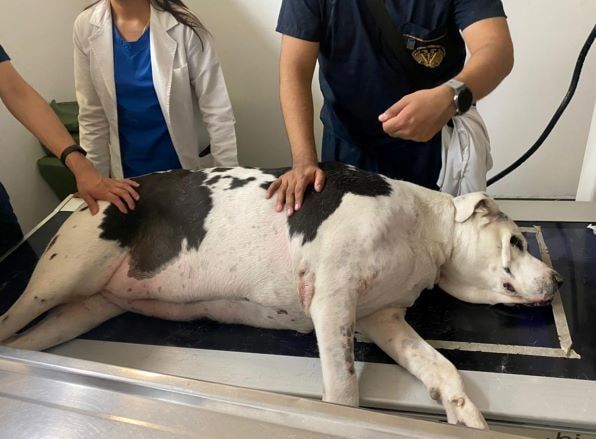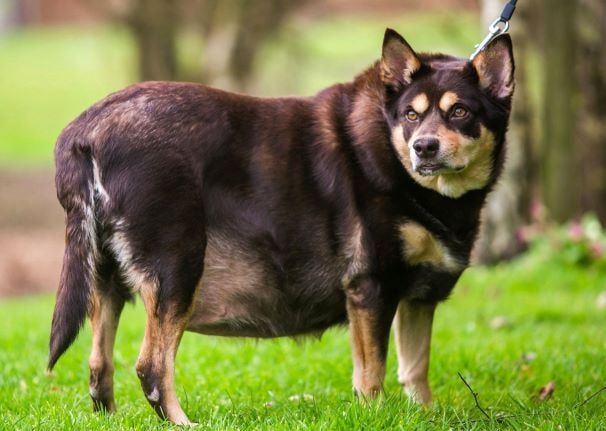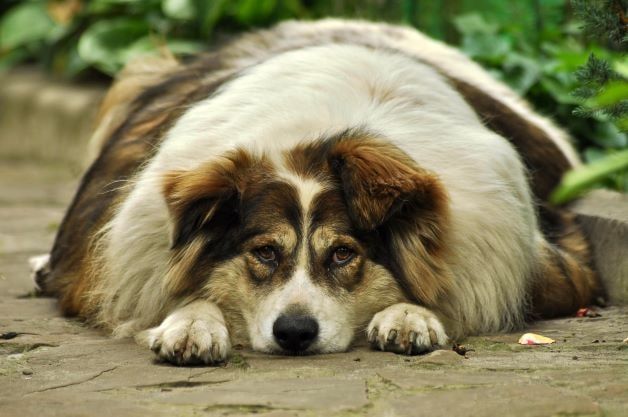Obesity reduces the life of dogs by up to 20 percent
Walking and running are essential for all breeds. They suffer from diabetes, triglycerides, and fatty liver. Get to know more in this article.

In Mexico, the incidence of obesity in dogs is between 35 and 40 percent, percentages that coincide with the prevalence of this disease among the population, explained Gerardo Garza Malacara, an academic at UNAM's Cuautitlán School of Higher Education (FES).
It is a problem whose causes can be multiple; its consequences are other ailments such as diabetes, accumulation of fatty acids, and triglycerides that increase the risk of heart disease or that can cause fatty liver or pancreatitis, which will affect the pet's health.
The expert pointed out that the lifespan of a dog with obesity can be reduced by around 20 percent. If we expect it to live 10 years, it could last seven and a half or eight, because it will begin to have joint problems -another of the problems of obesity- and it will not want to exercise because its paws will hurt. This will prevent him from staying healthy.
Mexico, he recalled, has one of the first places of obesity in children and adults and that makes the guardians (formerly called owners or proprietors) of the dogs not to be fond of exercising. There is a tendency to have obese guardians, with pets in the same condition. "Sometimes there are homes where there are also active people and that helps the companion animal a lot".
Exercise, of course, helps to maintain good health. When it does not go out to exercise, the animal consumes the amount of food it should, but does not expend energy, and begins to put on weight. For all breeds, but especially the most active ones, such as the German Shepherd, it is essential to walk, run and train it.

Multicausal
To determine when a dog is obese, specialists use tables with scales; the most used is from 1 to 5, where 1 is a very underweight dog, and 5, is an obese one. "When looking for an ideal weight, we have to see what breed we are talking about; however, we have the problem that not all patients who come to the consultation have a defined breed and, therefore, there is no exact parameter of the ideal weight range."
Nevertheless, a simple way to know the obesity that is being presented is to pass the hands over the thorax (chest) of the dog: if the ribs cannot be seen or felt and the trunk of the animal is rounded due to the accumulation of fat, there is obesity. These bones should not be seen, but they should be felt, the university professor pointed out.
The causes of the disease can be multiple, among them, pathogenic: hypothyroidism, a hormonal imbalance common in dogs and generally caused by the inflammation or contraction of the thyroid gland; or hyperadrenocorticism, also a hormonal condition that occurs when high levels of cortisol are chronically produced.
Also, the patient's nutrition: "in many occasions, we leave the food to free demand, and if the dog is very greedy or distracted and eats at times, it produces that the dog does not have the ideal weight, but is under or over its ideal weight".
Another cause is to give treats "without rhyme or reason"; these, said the university professor, should serve to reinforce their actions or to show affection for our pets. However, the excess can lead to obesity.
There are breeds predisposed to overweight, such as Labradors, Golden retrievers, or cocker spaniels, "which are very greedy, they clean the dish and if the bag of food is left open they can finish it, even if they are vomiting afterward".
As for the type of food, Gerardo Garza informed that the cheap ones do not cause obesity, but the amount they ingest. "In the market, there are from economic to premium and super-premium; the latter is better since less quantity is required to cover the pet's nutritional requirements".
With orchiectomy (castration of males) and oforosalpingohysterectomy (consisting of removing ovaries and uterus) in the case of females -surgical procedures commonly called "sterilization"- not so much energy is required for the respective production of sperm and eggs, so it is necessary to decrease the amount of food they eat by 10 percent. If this adjustment is not made, "we will have pets with a tendency to obesity".

Treatment and recommendations
It consists of regulating the amount of food ingested. "Veterinarians commit with the guardians to recommend the type of food according to each animal, its lifestyle, the stage of life it is in, and its physiological state".
On numerous occasions, guardians read the feed labels, but they don't know how to interpret them. "With a mathematical calculation, the daily energy requirement is obtained, not food. That amount can be divided into two or three meals a day so that the pet does not have an empty stomach for so long and eats with greater peace of mind".
A common mistake is to buy low-fat food and provide the amount according to the dog's weight when the correct thing to do is to calculate the amount about the ideal weight that the dog should have.
As a method of obesity prevention, he recommended visiting the veterinarian to determine the type of food that the guardian can acquire. "Many times they argue that they are expensive, but you have to consider that with the superpremium ones you give him less food and he will be better nourished".
The doctor can calculate how much, how, and when the pet should eat and the type of food; there are dogs allergic to grass, for example, that require hypoallergenic food as support.

Finally, Gerardo Garza urged people to exercise their dogs, and feed them at the right time and in the right amount to keep them at the ideal weight and extend their life.




